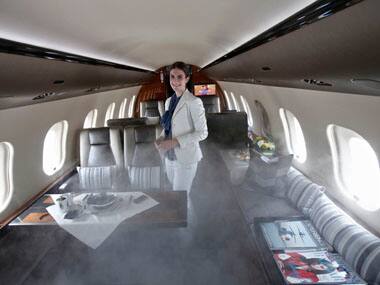New Delhi: Corporate fat cats who can afford to fly abroad in a private jet need not take any fresh clearances from aviation regulator DGCA but every other non-scheduled operator will have to go through a one-time process of comprehensive checks by DGCA before flying overseas now. This means all business jets and charter flights except those owned by individuals will have to go through such checks, where a 200 page long list of requirements will need to be satisfied. Else they cannot charter flights for overseas destinations.
Also, scheduled and non-scheduled operators will now have to first get permission from the DGCA before taking aeroplanes abroad for changing seat configurations or adding any equipment to aircraft which is not prescribed in the aircraft manual.
The exemption granted to jets owned by private individuals from fresh checks seems rather discriminatory but the DGCA says world over, private jets owned by individuals are not screened and a debate is raging in the International Civil Aviation Organisation (ICAO) to frame a regulation over this. At least 44 business jet operators fly overseas.
[caption id=“attachment_1069999” align=“alignleft” width=“380”]
 Reuters[/caption]
Reuters[/caption]
DGCA Arun Mishra said today that these checks were earlier not being done since air operators merely informed the regulator of their intention to fly abroad.
Impact Shorts
More ShortsThese sweeping checks and balances being put in place by the DGCA come in the wake of a downgrade threat from ICAO earlier, which had raised two significant safety concerns (SSCs) in India during its inspection of Indian air safety practices in December 2012. The concern on airworthiness related to approval of major modifications and repairs carried out on foreign manufactured aircraft and registered in India while the concern on operations related to the procedure for grant of Air Operator Permit to non-scheduled operators and flight documentation system of scheduled airlines.
Now, the DGCA claims to have satisfied ICAO on both counts and says that India no longer figures among the States with SSC on the ICAO website. Now, the US safety agency, FAA, is scheduled to conduct a similar safety audit of Indian aviation from September 9-13.
An unintended but positive fallout of this positive ICAO rating is that now the Japanese safety regulator may agree to Air India’s request to change the aircraft it uses on the daily Osaka flight from a Boeing 777 ER to the 787 Dreamliner. The Japanese themselves fly in the dreamliners into India via ANA and JAL airlines but had refused permission to AI saying the Indian authorities must first satisfy ICAO on the two SSCs.
)